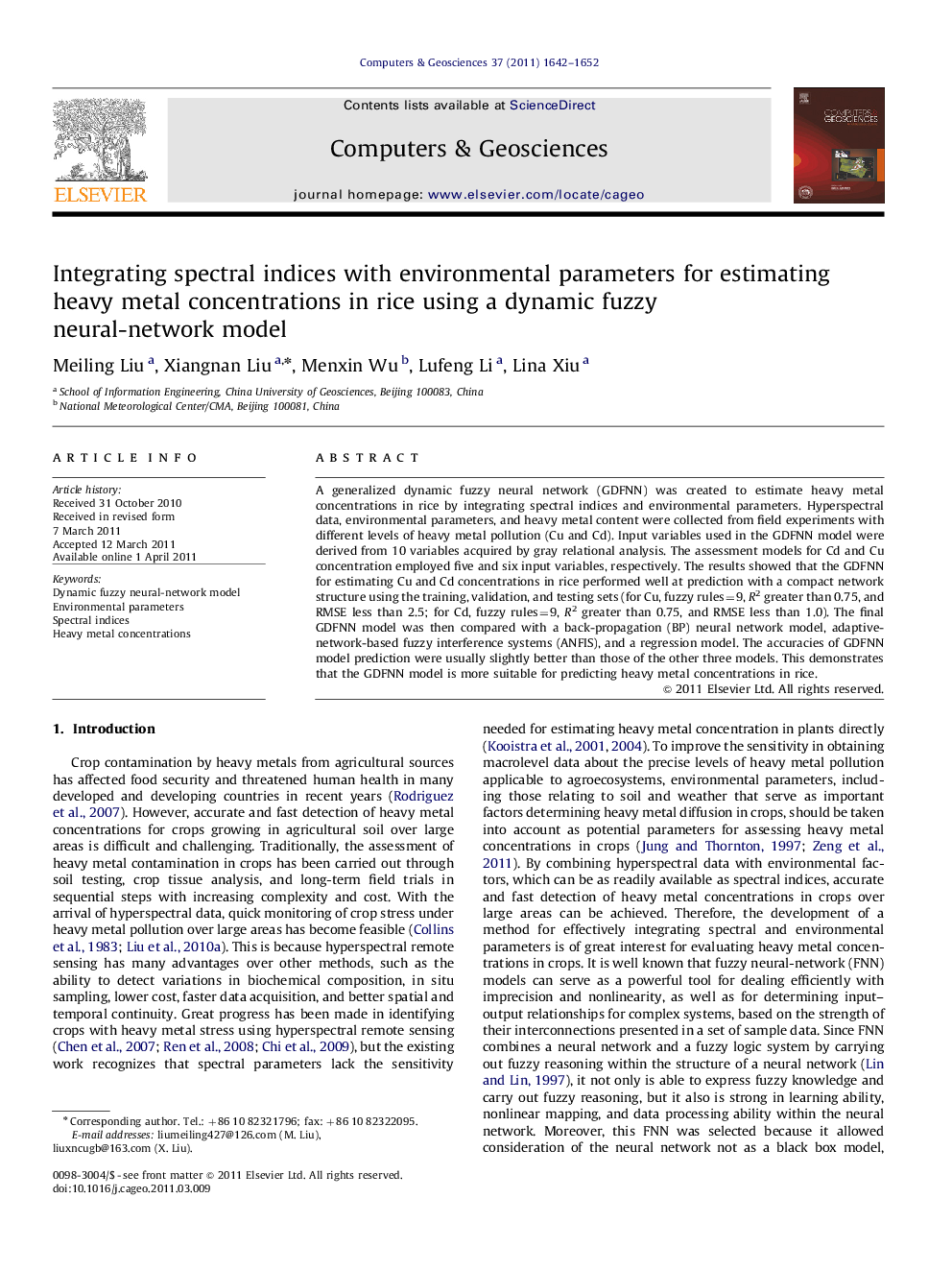| Article ID | Journal | Published Year | Pages | File Type |
|---|---|---|---|---|
| 507703 | Computers & Geosciences | 2011 | 11 Pages |
A generalized dynamic fuzzy neural network (GDFNN) was created to estimate heavy metal concentrations in rice by integrating spectral indices and environmental parameters. Hyperspectral data, environmental parameters, and heavy metal content were collected from field experiments with different levels of heavy metal pollution (Cu and Cd). Input variables used in the GDFNN model were derived from 10 variables acquired by gray relational analysis. The assessment models for Cd and Cu concentration employed five and six input variables, respectively. The results showed that the GDFNN for estimating Cu and Cd concentrations in rice performed well at prediction with a compact network structure using the training, validation, and testing sets (for Cu, fuzzy rules=9, R2 greater than 0.75, and RMSE less than 2.5; for Cd, fuzzy rules=9, R2 greater than 0.75, and RMSE less than 1.0). The final GDFNN model was then compared with a back-propagation (BP) neural network model, adaptive-network-based fuzzy interference systems (ANFIS), and a regression model. The accuracies of GDFNN model prediction were usually slightly better than those of the other three models. This demonstrates that the GDFNN model is more suitable for predicting heavy metal concentrations in rice.
